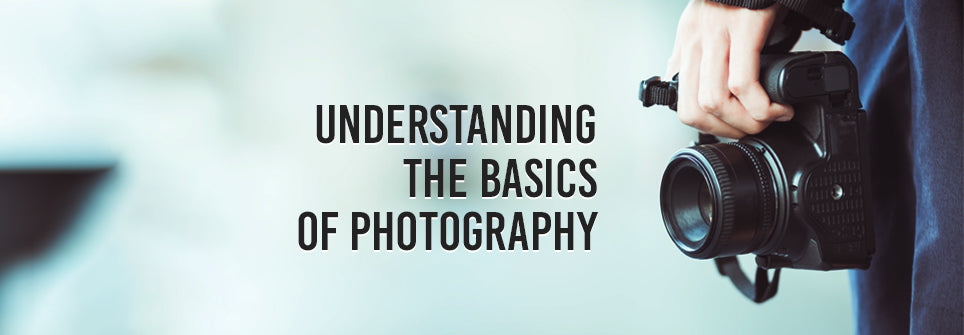Understanding the Basics of Photography
- basic photography
- basics of photography
- Posted on April 24, 2020
- Categories: News

The basics of photography are incredibly important in turning you into the DSLR camera savant that you are going to be in the future.
Not only do you need to know basic photography techniques, but you should also understand the principles that affect photography, to begin with.
Basics of Photography
Photography comes with a ton of complicated modes, functions, forms, and features, just to name a few of the aspects that make this field so complex.
There is a reason why pictures taken with DSLR cameras have been elevated to a form of art in many circles.
It requires similar levels of finesse as other types such as painting, sculpting, and more. Among the most important points of consideration are:
-
Lighting - The amount of light that your camera is going to be capturing will have a significant impact on the quality of the photos that you will get. This is why it is important that you adjust the ISO to the right levels, lowering it during the day, and increasing it at night.
-
Focus - The focus of your camera will affect the crispness of every shot, causing blurs and distortions if you don’t have the right settings. There are many modes for this particular function, all of which you must treat carefully.
-
Color - The color of contrasts and the different shades must be considered carefully if you are trying to create a good shot. This goes doubly true for shots with filters since those are going to have a profound effect on the feel of the shot.
-
Composition - Venturing into high art photography now, the composition is basically the structure of any given image. It makes use of the objects in the frame to produce a certain effect. Whether it is joy, horror, sorrow, or anger, just to name a few examples.
-
Background - Naturally, the background of every image is going to matter if you are taking landscape photos. There needs to be a balance in all the elements present, which requires experience and a bit of training.
-
Shutter Speed - Shutter speed can have a huge impact on the crispness of the image, as well. Sharper images with more depth can usually be obtained by slower speeds while shorter speeds allow for multiple shots at high speed.
-
Aperture - Aperture involves fiddling with the subject of the shot to make sure that you emphasize the thing that you are trying to capture. The main subject will have a sharper focus while everything else will be just a blurred background.
-
Flash - Finally, there is the issue of the flash, which can be quite a major concern. After all, while it can lead to some relatively good shots, it can also be quite disastrous. The images become distorted, unbalanced, and can come off as the work of an amateur.
There are many who are not entirely sure when they should use the flash and when they should not, either. This further complicates the issue.
Why Basic Photography Techniques Matter?
There are multiple photography techniques that are available for you to use at any given time to bring about a particular effect that you are aiming for.
They make use of the factors listed in the earlier section and combine them in one form or another that makes use of light sources, angles, backdrops, and more.
The importance of these techniques, however, can be summed up with the following:
-
Efficiency - Regardless of what you are trying to achieve with the shots that you are taking, making use of existing techniques simplifies and streamlines the whole process. You have a reliable method of doing something with your DSLR camera and getting the image you want. It makes everything easier.
-
Misdirection - Techniques are very good when photographers are trying to hide details in the background until the images are seen in a certain way. Techniques are also good at bombarding viewers with details to obscure their vision.
- Emphasis - Likewise, techniques can be very good at allowing viewers to zero in on the subject of the photo right away. There is no mistaking the focus of the shot when everything else is blurred, set far away in the background, or cut altogether.
Basic Photography Techniques
There are a ton of basic photography techniques that you can choose from, but if you had to choose a few, these five should be a good place to start:
Long Exposure - This involves longer shutter speeds, which allows for the accumulation of a considerable amount of light, thus giving off the illusion of flow being stationary. Images that involve highways with streams of light are great examples of this.
This is best done when you have a tripod, which would be easier to carry if you had a tripod carrier with you at all times.
Motion Blur - Motion blur is exactly what it sounds like. It’s the method of taking an image where both the subject and the photographer seem to be moving fast. It’s basically a variant of long exposure.
Black & White - One of the most powerful and popular photography techniques in the world, black & white has been used to feature celebrities, disasters, historic events, and nature for a long time.
In many cases, this is the photography technique that most people are familiar with because it is the most closely associated with photography arts. Any good DSLR camera comes with a default black & white setting.
Light Painting - This technique involves a light source that will essentially allow you to control the amount of exposure that certain objects in range will get. It can be a powerful lamp or a simple flashlight.
From there, you just shine it on the object with the colors you want to stand out and set the camera for a long exposure shot. This is one of the best reasons to get a tripod.
Silhouette - Naturally, the silhouette can’t be forgotten. This is where the shot is taken against a light source, with the object being bathed in shadow and only their outline is visible.
So, there you have it. These are some of the considerations that come with the basics of photography. If you find resources like this helpful, you can find more articles on the website that delve into more aspects of photography, both for beginners and professionals.








